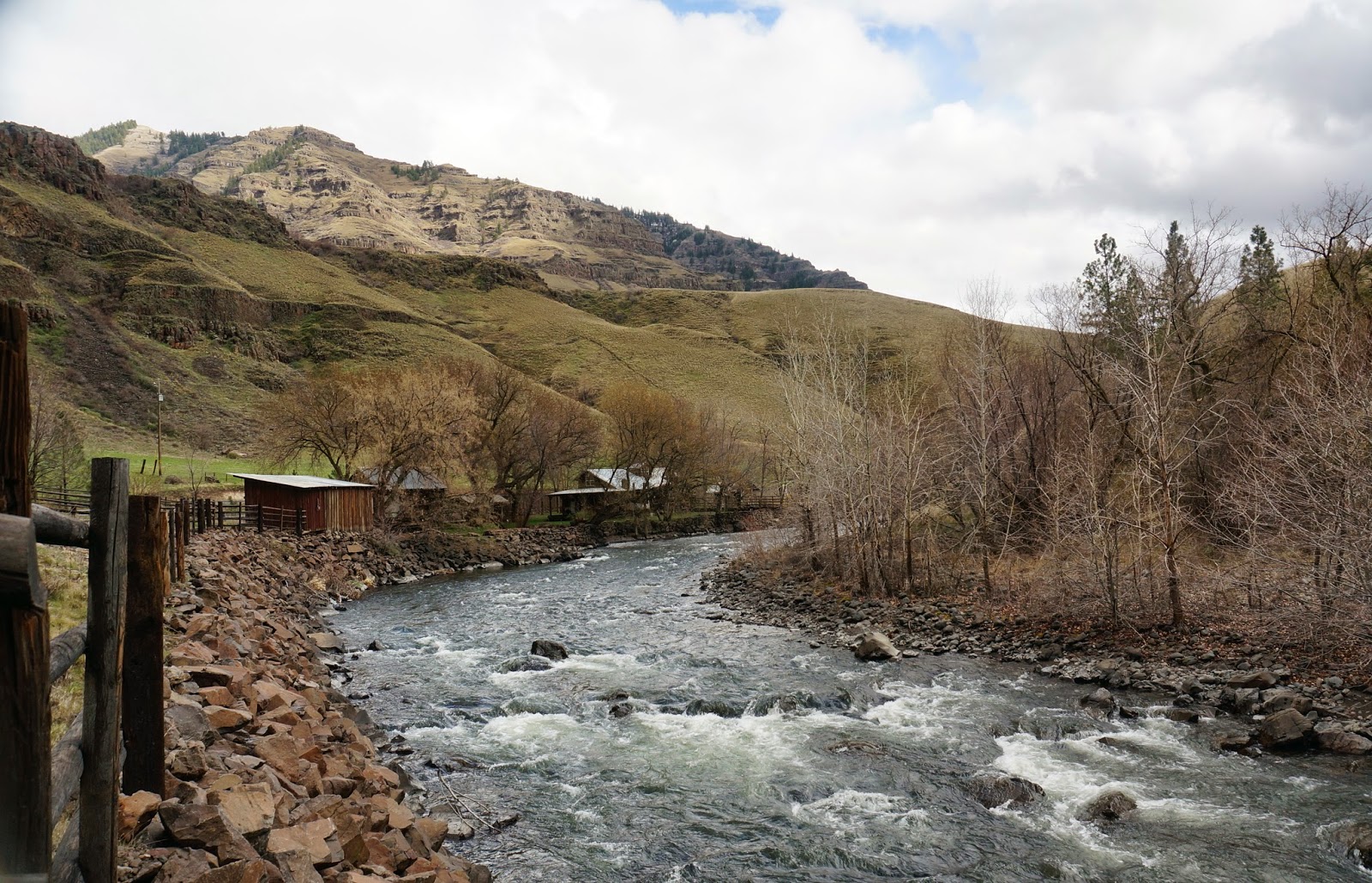The Wallowa Valley band of Nez Perce Indians, known to themselves as the Nimiipuu (nee-nee-poo), summered in Wallowa Valley because of lush pastures for horses and game, but they over wintered along the Imnaha River thirty miles to the East. The Imnaha River flows through a canyon thousands of feet lower in elevation than Wallowa Valley. The canyon and low elevation sheltered them from the harsh winter conditions of the Wallowas.
Princess, the domestic violence survivor from the blog Princess, the Domestic Violence Survivor Who Was Abused by her Husband and then by Her Church took me to the Imnaha River Canyon in March 2014. These are the photos and reflections inspired by that trip.
On a late winter's day we descend along Little Sheep Creek to the Imnaha River Canyon.
Through eons of time, streams and rivers eroded layer after layer of basalt lava flows to create the canyon.
A lonely horse in this isolated river valley seeks our company.
At Imnaha Station, a bridge allows us a view down the river.
Here the Wallowa Valley Nimiipuu people sheltered their families and horses from winter snow and cold.
Late winter pastures are already growing green.
Fruit trees bloom in a farmer's field.
Blue skies and sun peak through the clouds on this day, creating a color filled view.
Rust red volcanic rim borders the blue sky.
Red branched, leafless willows prepare shoots for the spring.
We travel up the Imnaha River Canyon to…
…where a pioneer cabin nestles in river bend.
A hand hewn wood fence and building remind us of the hard work and the longs hours our pioneer ancestors devoted to creating shelter from the weather.
At the journey's end, back at Imnaha Station, we walk around and investigate the Imnaha Store and Tavern wood and stone building built in 1904.
Here you can meet locals and eat homemade rural Western American food and drink cold beer ….
….. and enjoy the charm of the outside of the building.
In March 2014, returning to Wallowa Valley, we enter a snow squall,
…..reminding us of the need to shelter from winter storms.
What metaphoric winter storms exist in your life?
What do you do to shelter yourself from these storms?
What more can you do?
What parallels exist between the hard work of pioneers to create shelter in an era before power saws and Home Depot and wallboard and the hard work of recovery from abuse and emotional trauma?
Directions From Joseph Oregon:
Turn left off of Highway 82 onto the Imnaha Highway (Highway 350) out of the center of Joseph while headed south towards Wallowa Lake. Turn right if headed north. At Imnaha Station turn right or left and follow the road as far as you wish. Eventually it becomes a dirt road.
Time to travel: During the summer the Imnaha River Canyon is very hot and dry. During the winter, although the roads from LaGrande and Milton Freewater and Pendleton are often plowedLinks to blog on Natural History of the Wallowa Mountains and Wallowa Lake
Links to blog on the History of Chief Joseph and the Wallowa Nimiipuu and Their Flight from the US troops and settlers.
© 2014 Virginia Jones

















No comments:
Post a Comment